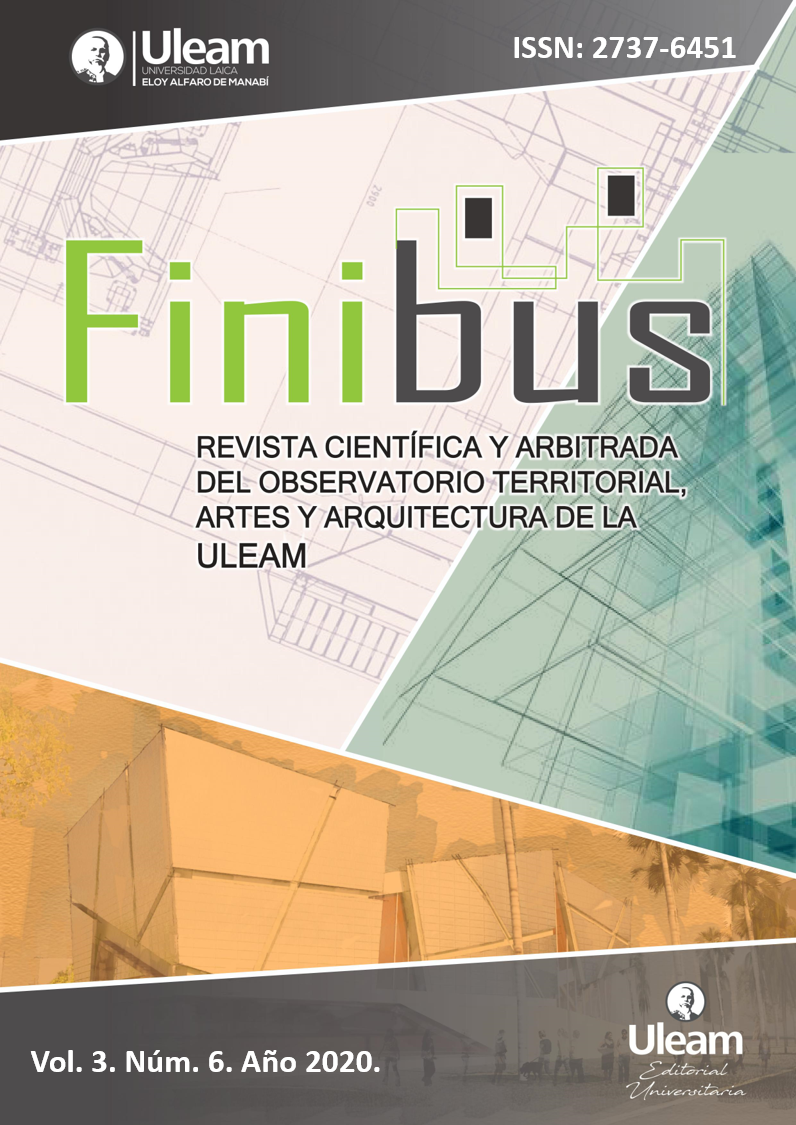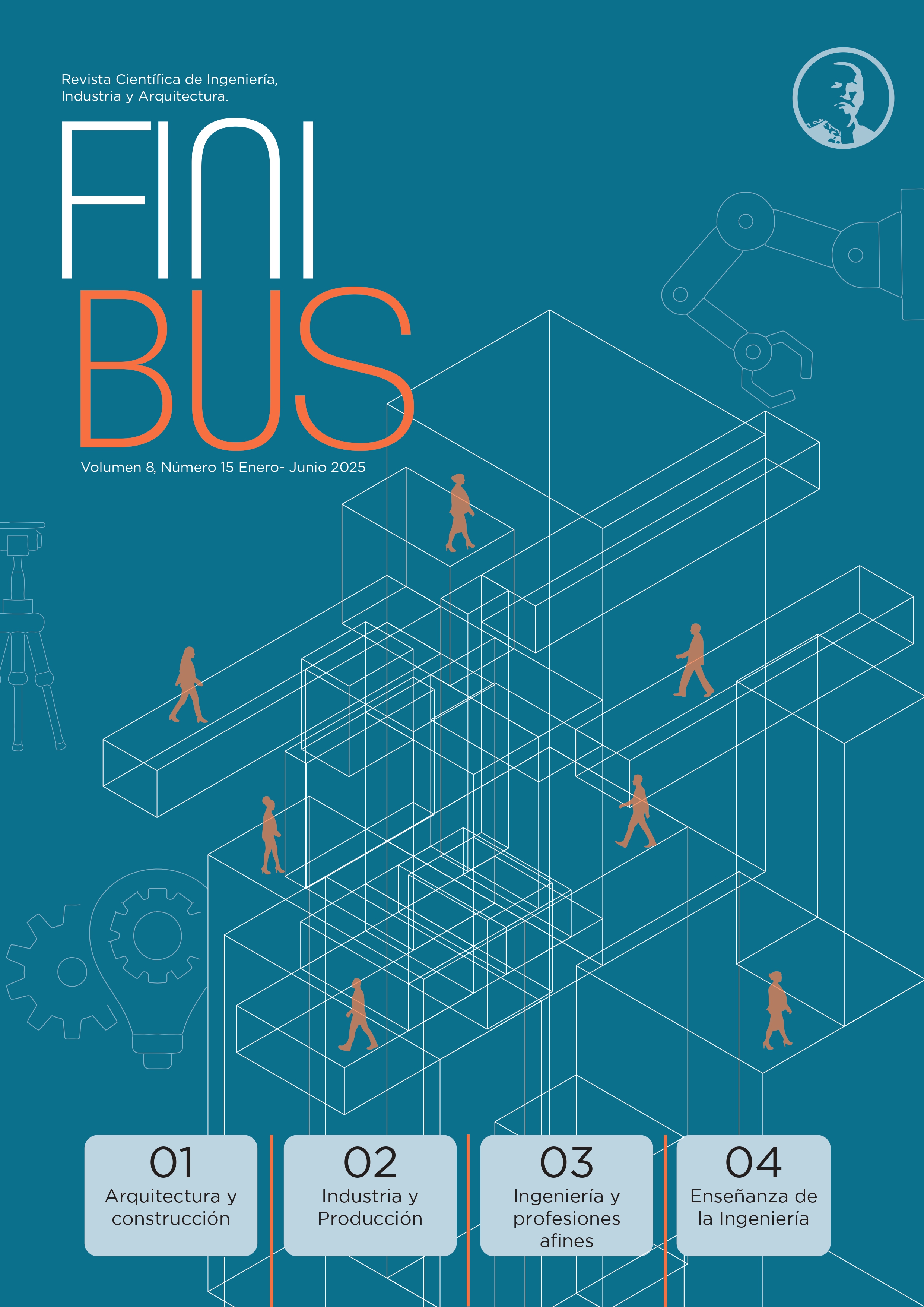Desarrollo de estrategias urbanas para optimizar el espacio público del Sector Barranco Pelado Barrio La Paz
Artículo de investigación
Palabras clave:
planificación, deterioro urbano-ambiental, implicaciones negativas, uso de suelo, dinamismoResumen
Las distintas problemáticas sociales y urbanas que atraviesa el sector Barranco Pelado del barrio La Paz en Portoviejo originalmente son causadas por una deficiente planificación, implantando un edificio comercial que posteriormente serviría de refugio para el cumplimiento de actividades de dudosa legitimidad, dando una mala imagen urbana a la zona y evitando las interacciones sociales de las personas del lugar. Se analizaron las distintas causas que hayan iniciado estas problemáticas con la finalidad de plantear una propuesta que mejore la situación que acontece al sector. En esta investigación la metodología que determine las causas de la problemática por medio del análisis de normativas y con apoyo de los habitantes del sector estudiado. En que se logró establecer que la panificación e implantación del proyecto comercial mencionado anteriormente generó implicaciones negativas en las actividades del sector; además que el impacto medioambiental se genera en el poco cuidado de las masas de agua del Río Portoviejo influenciando en la mala imagen que se genera de la ciudad. Para la realización de la propuesta se analizaron investigaciones similares que presentaban dificultades semejantes, pero de distintas causas, dando un nuevo enfoque a la resolución de la problemática principal del estudio.
Palabras clave: planificación, deterioro urbano-ambiental, implicaciones negativas, uso de suelo, dinamismo.
ABSTRACT
The different social and urban problems that the Barranco Pelado sector of the La Paz neighborhood in Portoviejo faces are originally caused by poor planning, implanting a commercial building that would later serve as a refuge for the fulfillment of activities of doubtful legitimacy, giving a bad urban image to the area and avoiding the social interactions of the local people. The different causes that have initiated these problems were analyzed in order to propose a proposal that improves the situation that occurs in the sector. In this research the methodology that determines the causes of the problem through the analysis of regulations and with the support of the inhabitants of the studied sector. In which it was established that the planning and implementation of the aforementioned commercial project generated negative implications in the activities of the sector; In addition, the environmental impact is generated in the little care of the water masses of the Portoviejo River, influencing the bad image that is generated of the city. To carry out the proposal, similar investigations were analyzed that presented similar difficulties, but of different causes, giving a new approach to solving the main problem of the study.
Keywords: planning, urban-environmental deterioration, negative implications, land use, dynamism.
Fecha de recepción: 20 de abril de 2020; Fecha de aceptación: 07 de julio de 2020; Fecha de publicación: 09 de julio de 2020.
Descargas
Citas
Coello-Torres, C., & Schroeder, S. (2019). Exploración de una metodología integral de los espacios urbanos abiertos en Piura, Perú. Revista AUS 28, 1-9. http://revistas.uach.cl/index.php/aus/article/view/6206/7288
De Juan Falcó, A. (2019). Regeneración Urbana. Density, 28-32. https://riunet.upv.es/handle/10251/119513
Dorado Pinto, M. B. (2016). Integración de infraestructuras de vialidad y estancias. Valparaíso. http://opac.pucv.cl/pucv_txt/txt-5500/UCF5699_01.pdf
González Luna, M. R. (2016). UNA NUEVA REVOLUCIÓN EN LA MOVILIDAD URBANA: LOS SISTEMAS DE BICICLETAS PÚBLICOS. DecuAnus, 30-32. http://erevistas.uacj.mx/ojs/index.php/decumanus/article/view/1283/1121
Morella, B. (2018). Paisaje urbano y espacio público como expresión de la vida cotidiana. Revista de Arquitectura, 13. http://www.scielo.org.co/pdf/rarq/v20n2/1657-0308-raqr-20-02-10.pdf
Moreno, M. A. (2018). ¿A pie o en bicicleta? https://riunet.upv.es/bitstream/handle/10251/115024/memoria_44893234.pdf?sequence=1&isAllowed=y
Naranjo, N. (2017). OCUPACIÓN SISTEMÁTICA DE LA ACERA. Trienal de investigaciòn, 2-5. http://trienal.fau.ucv.ve/2017/publicacion/articulos/CS/extenso/TIFAU2017_Extenso_CS-12_NNaranjo.pdf
Ortega Quiroga, C. M. (2019). REGENERACIÓN DE ESPACIOS PÚBLICOS A TRAVÉS DE UNA REDEFINICIÓN DE PATRONES DE MOVILIDAD, EN EL ÁREA URBANA DEL CANTÓN AMBATO. Ambato. http://201.159.222.95/handle/123456789/999
Otárola, M. (2019). Impronta del espacio público en la formación del ser humano. REVISTARQUIS, 86. https://revistas.ucr.ac.cr/index.php/revistarquis/article/view/35800














